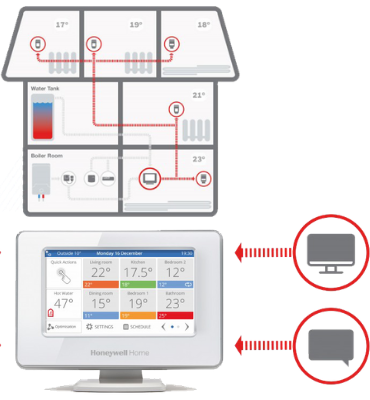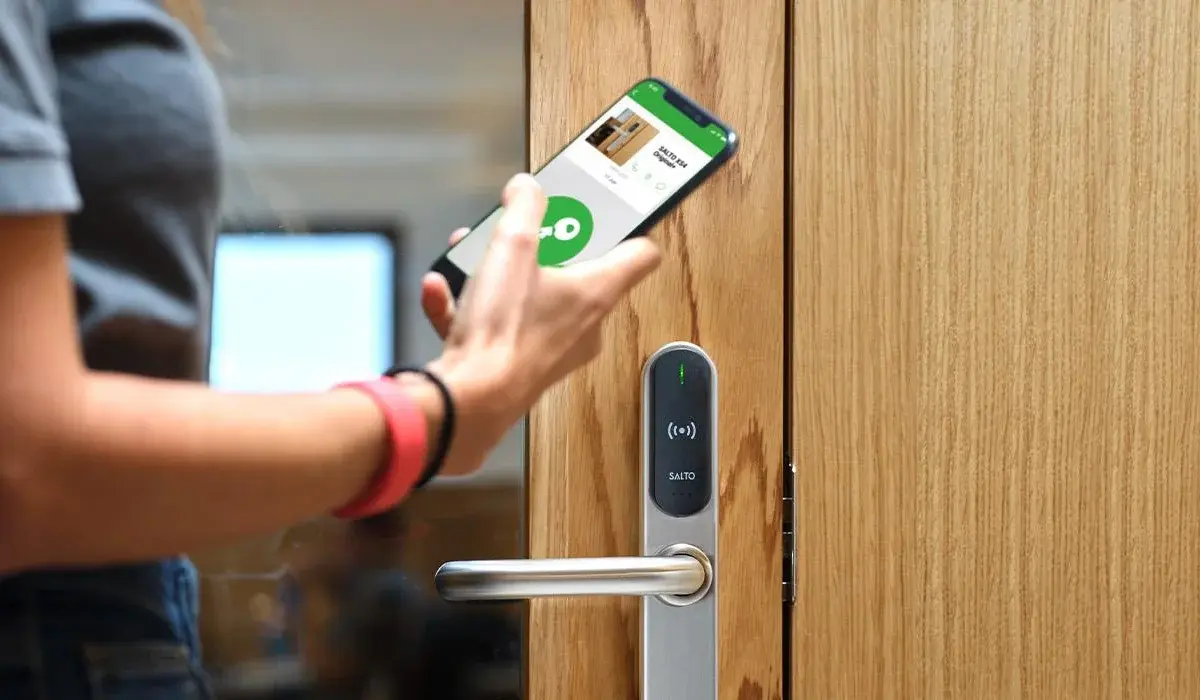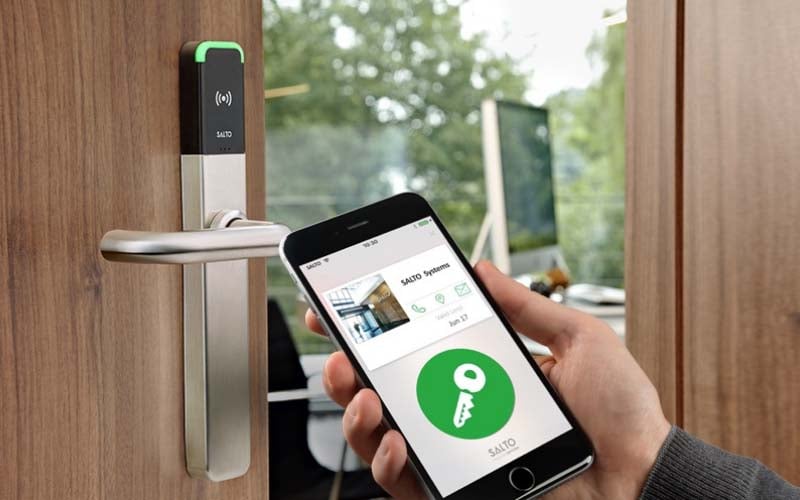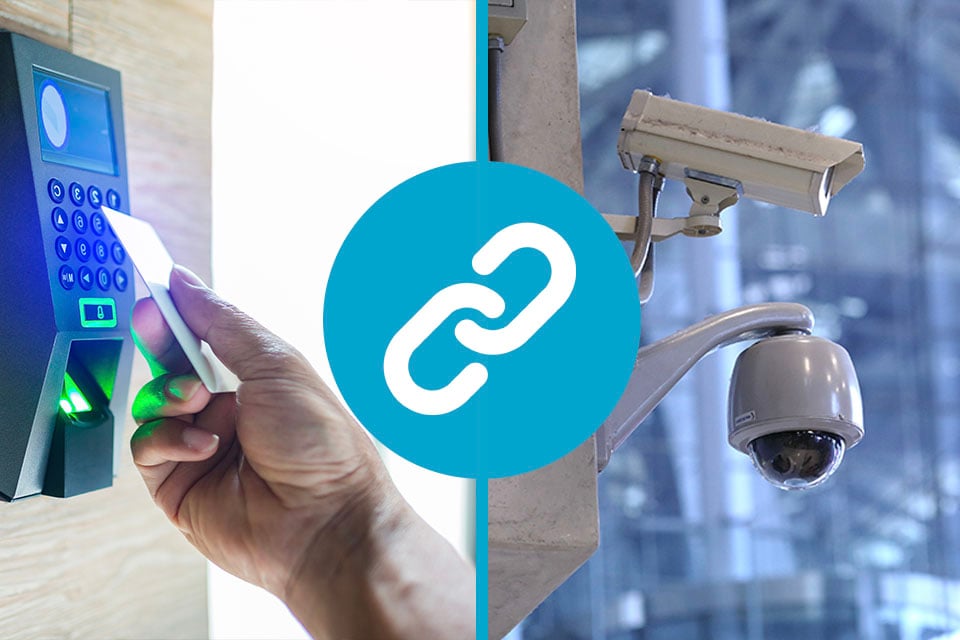With the colder months fast approaching, and the impact of global warming beginning to be seen, staying warm at home while also reducing energy consumption has become an important issue for many people.
Jump To
- What Is a Smart Heating System?
- What Types of Smart Heating System Are There?
- What Are the Benefits of a Smart Heating System?
- Can I Add Smart Heating to My Current Setup?
- Final Thoughts
One potential solution is smart heating systems. In this blog we will explore some common technologies on the market that can increase convenience through automation and, at the same time, reduce energy use by almost a third. Let’s dive in.

What Is a Smart Heating System?
A "smart" heating system is one that is connected to your wifi, which can be controlled from any internet-enabled device, even when you’re not home.
In the UK this tends to refer to devices that deal with your central heating, as opposed to a “central air” setup which can both heat and cool.
What Types of Smart Heating System Are There?
The term “smart heating” covers a few different technologies, which are often connected to each other. The most common options are thermostats, central heating control packs and intelligent radiator valves.
Smart Thermostats
The one technology that every smart heating system will have is an intelligent thermostat.
These thermostats come in two main types, wired and wireless. A wired smart thermostat communicates with your heating system at the same spot as a regular one. A wireless option, like a Nest thermostat, can be placed anywhere in the home and talk to the central heating from there. Neither needs to be used with any other central heating or hot water control products.
Like their traditional counterparts, wired and wireless smart thermostat systems work by controlling the heat for the entire home. Unlike regular thermostats, these connect to the internet and can be accessed from anywhere in the world.
Other types of smart thermostat work instead by talking to a smart hub. These will be set up in each room that you wish to heat and manage the temperature in their “zone”.

Smart Central Heating Control Packs
These packs can contain multiple components, but besides a thermostat the other piece of tech they will all have is a hub. This is a central control panel that will talk to the other technology in the pack.
Smart heating controls will manage the temperature in individual rooms (or “zones”), rather than the entire home. In most packs this multi-room control will be done by the hub connecting to intelligent valves found on each radiator.
Controlling the heat in each room can be done in real time, from the hub or an app on a phone or tablet. More commonly, though, the heating will work on a schedule. With these schedules, rooms will be warmed or allowed to cool according to when they will or won’t be in use.
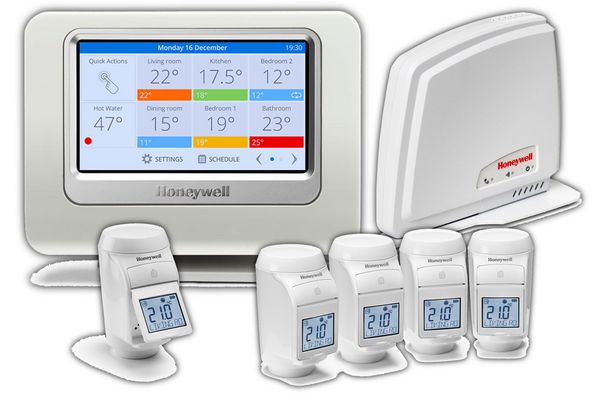
Smart Radiator Valves (SRVs)
SRVs directly replace TRVs (Thermostatic Radiator Valves), which are the standard temperature control valves attached to radiators. Each SRV contains its own thermostat that it uses to detect how warm the room (or “zone”) is. The SRV measures the warmth of the room, then increases or reduces the flow of hot water into the radiator to change its heat output. The desired temperature for the room at different times of day will have been programmed into the hub, but can also be overridden from the SRV.
The added function provided by switching to SRVs is dramatic, even when compared to that of an intelligent thermostat.
However, as the setup becomes more complicated, the odds of something going wrong during installation increase. As such, we don’t advise that you make this a DIY job, or hire a less experienced contractor to install. A professional smart home contractor will help you get the most out of your setup. They can also find ways to integrate your heating with other home automation features you may have, for even greater convenience and comfort.
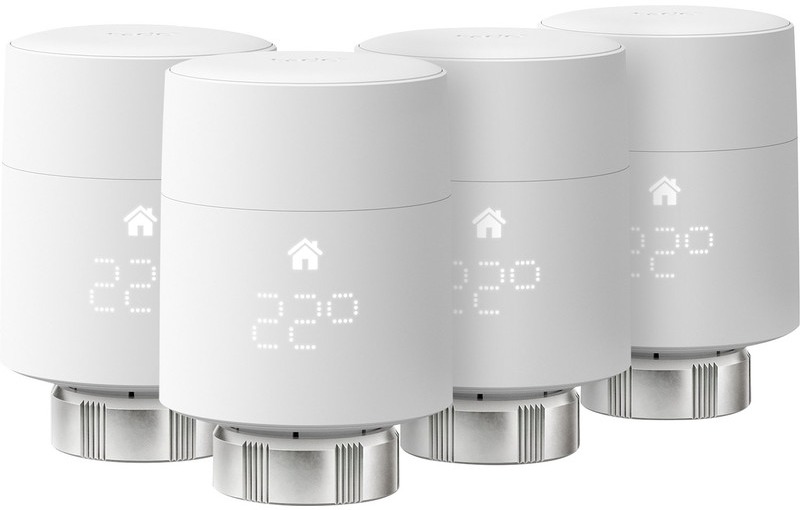
Smart Electric Radiators
These are electric heaters that don’t have to work directly with the other multi-room techs, but which can be used to warm single rooms on a schedule. What makes these different from regular programmable electric radiators/heaters is that you can control and program them remotely, via the internet.
Intelligent electric radiators can also work with a hub, and heat rooms that aren’t plumbed into the central heating network. These may be outbuildings or garages, or rooms which simply need a boost in temperature at certain times to heat faster.

What Are the Benefits of a Smart Heating System?
Smart heating will make positive impacts to your lifestyle, the environment and your pocket. At a glance, these benefits will be improved convenience and reduced energy consumption. But what does this look like in practice?1. Remote Accessibility
Intelligent heating allows you to control the temperature of your home from a mobile device. Whether hunkered down in bed on a baltic winter’s morning, or on the way back from a brisk walk, being able to adjust the warmth of your home from anywhere in the world is massive.
Our favourite part? You don’t need to worry about setting the thermostat back to its usual schedule once you’ve fiddled around! It will automatically return when the next heating period comes around.

2. Smart Scheduling
Work from home three days a week? Kids come home from school at 4pm? Movie Days on Sunday? With this tech you can manage the heat schedule on a daily or hourly basis. Adjust your home's temperature according to your family’s activity and save yourself the frustration of telling the kids to “put a jumper on” all the time.
With offerings from Honeywell and Heatmiser, you can simply log into the cloud-based app and set schedules based on who will be where and when.
Ready to go a step further? Integrate your heat with your intruder alarms. That way, when the alarms are armed the heating turns down, but when geo-fencing detects you’re on the way home, temperatures will be returned to your desired level.
Your central heating can also be integrated with your calendars. We recently quoted for a village hall’s heating. The planned setup would switch itself on 15 minutes before a scheduled meeting to warm up the room, then turn off the heat 15 minutes after it had finished.

3. Individual Zone Management
With intelligent heating you can break your home into “heating zones”, and each “zone” can have its own temperature. The kids prefer their rooms warm at night, but you can’t sleep if you’re too hot? That’s fine, as each room is its own “zone”, two rooms right next to each other can have completely different temperatures.
Plus, as SRVs measure the temperature of a room, if you have a fire going, or are cooking up a storm in the kitchen, you won't overheat. The room thermostat will detect the temperature and lower the flow into the radiator, or switch off entirely, to stop the room getting too warm. This also applies if one room is losing heat faster than others, maybe due to an open window, as it means it can be warmed to a comfortable level without boosting the temperature of the rest of the house or wasting energy.
Zones don’t have to be limited to rooms either. You can set them up to encompass entire floors of your home instead, if that fits your usage patterns better. However, it is worth checking with your installer whether this is possible with your setup.

4. Usage Reporting
Some of the more advanced systems on the market provide usage reports, which show you how your home is being heated, so you can adjust schedules accordingly. We’re especially excited by how AI tech is developing, with some devices now able to learn your routine and programme themselves based on usage patterns.
It’s even been suggested that future techs may be able to detect your body temperature, in order to fine tune your heating without leaving you shivering or sweating. These are still some way off, however, so for now, just watch this space.
Can I Add Smart Heating to My Current Setup?
In a word, yes! Smart thermostats are designed to be set up in place of your current thermostat, you can add SRVs onto a standard radiator valve stem in place of a TRV, and electric radiators can be added to any room with a spare section of wall and a mains power supply. However, for many older central heating setups, while it is still worth getting a smart heating setup, even installing a smart thermostat can be quite a complex process, so we advise you hire an experienced contractor to change your system over.
Other Possible Smart Heating Integrations
Intelligent heating devices don’t have to be controlled from a central hub or a mobile device. A professional installer can integrate your heating with a voice assistant like an Amazon Alexa or Google Echo, so you can verbally request temperature changes in any room of your home.
Final Thoughts
Whether you want to limit your carbon footprint or cut wasteful spending on heating bills, intelligent systems are a great choice. However, in order to maximise the benefits you see from this tech, you should always have it set up by a professional installer.
At Chris Lewis Group, we have over 15 years of experience installing smart home tech. Our experts won't just set up your heating solution in the most effective manner. They can also unlock possible integrations to save you money, increase your energy savings, and maximise your comfort and the user-friendliness of your home.
Let us bring your system to life, get in touch with our experts today:
Submit the form below and we will reach out to you shortly.
.webp)
Tom Clarke
Related Posts
Chris Lewis Group Recognised as Exclusive Control4 Pinnacle Dealer
Chris Lewis Group Joins Exclusive Control4 'Pinnacle' Dealer Network The Chris Lewis Group is proud to announce its official recognition as a Control4 Pinnacle dealer, joining an exclusive group of.
What Is Smart Lighting & How Can it Benefit You?
Smart lighting is one of the most in-demand smart home features, and for good reason. If you want to add character and ambience to your home, it can make a huge difference without too much cost. But.
How Much Does a Smart Home Cost?
As experienced smart home installers, we often get asked one key question: How much will it cost? While design and installation costs will naturally vary from project to project, we understand that.




